Isabella Stewart Gardner created rich, layered installations of texture and color in her galleries. A key part of these environments are mirrors. There are over 20 of them throughout the Museum—all dispersing light and visitors’ reflections.
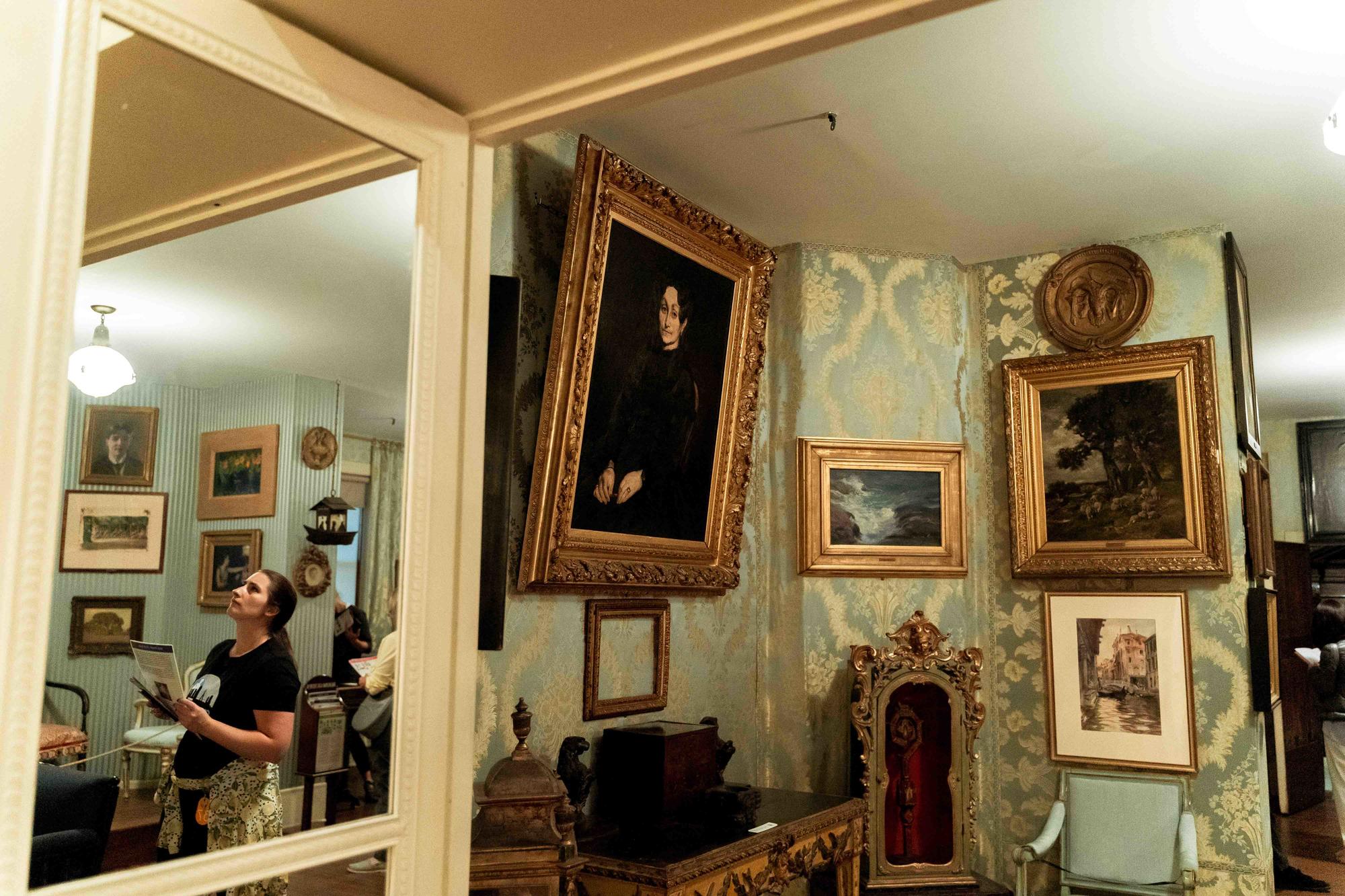
A visitor reflected in a mirror in the Blue Room, 2019
Photo by Faizal Westcott
The largest mirror in the collection is in the Little Salon—it’s over 12 feet tall!
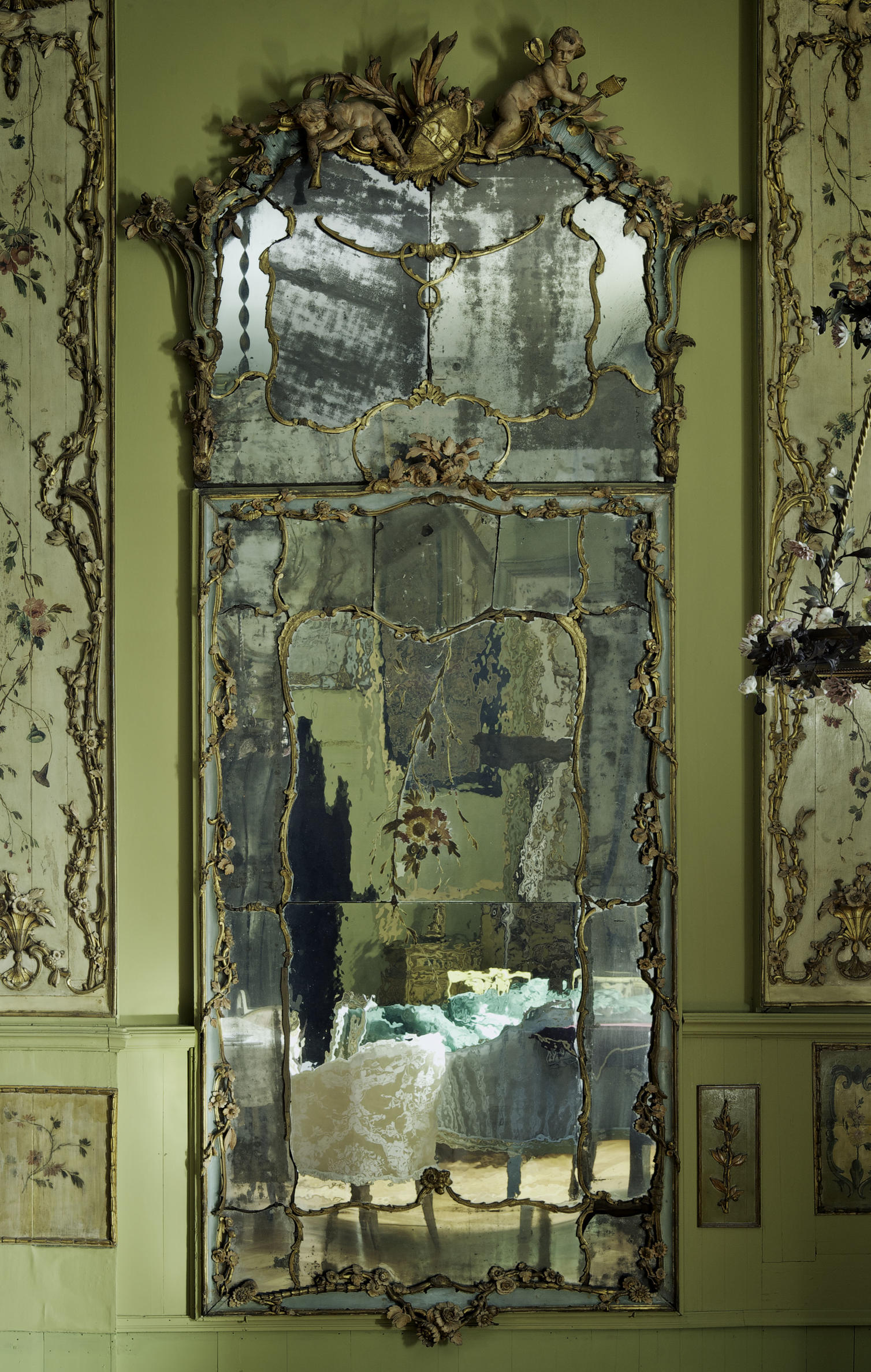
Italian, Venice, Mirror from the Palazzo Morosini on Campo Santo Stefano, 1760–1780
Photo: Sean Dungan
Isabella purchased the mirror with other paneling from the Venetian Palazzo Morosini through the antique dealer Antonio Settini. Venice was Isabella’s favorite city, and she undoubtedly took great joy in creating the ambiance of an 18th-century Venetian interior in her museum.
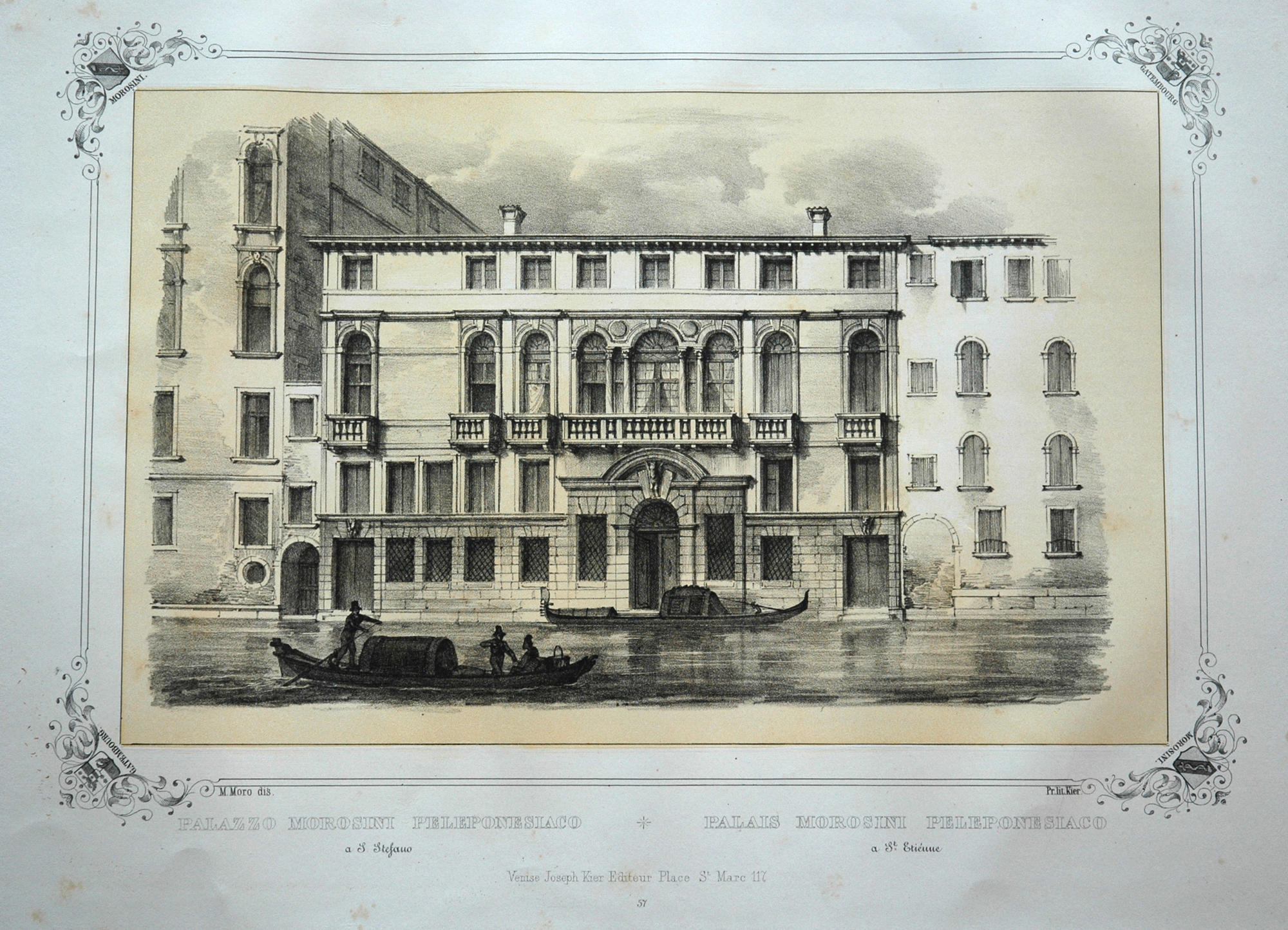
Marco Moro (Italian, 1817–1885, lithographer), Palazzo Morosini from the Rio del Santissimo, 1863
If you look closely at the mirror, you’ll notice the two little putti, or winged cherubs, at the top. One is playing a horn and the other holds a plaque; these are signs of triumph. In between the putti, there is a carving of a sword and helmet in an oval which are the arms of Doge Francesco Morosini (1619–1694), who lived there during his rule over Venice when it was still an independent republic in the late 1600s. These decorative elements commemorate his military victories over the Ottoman empire.
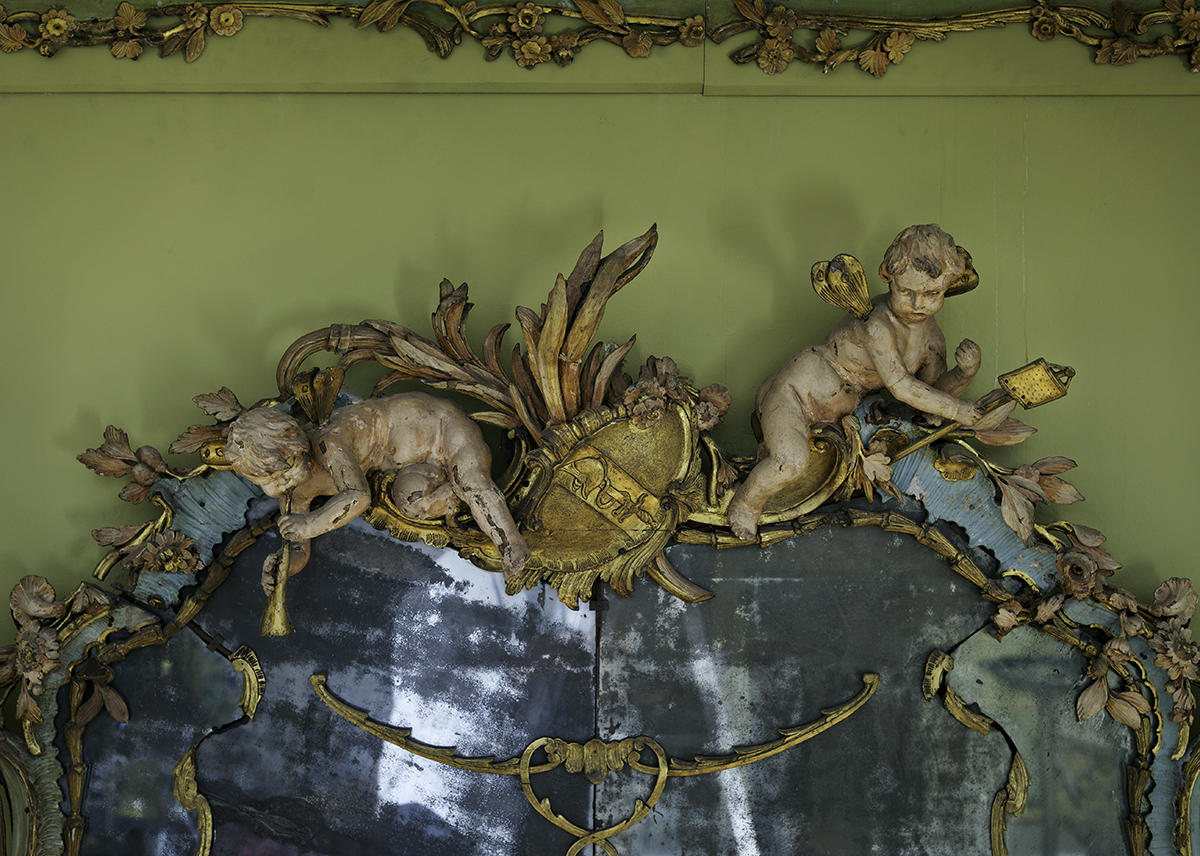
Detail of the top of the Mirror showing putti and arms of Doge Francesco Morosini
Photo: Sean Dungan
There’s another clue about the mirror’s history in the carved flowers and foliage around the frame. On the upper part of the mirror, the decoration extends outward and on the lower part, it reaches inward.
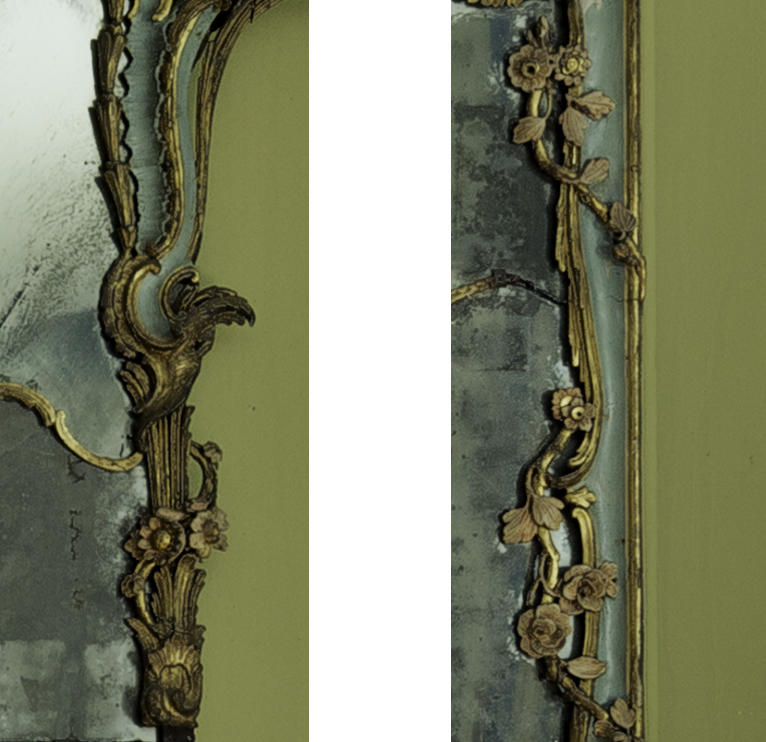
Left: Detail of the top portion of the mirror; Right: Detail of the bottom portion on the mirror
The mirror is actually a composite of two separate pieces of the Morosini paneling, that were then put together by Antonio Settini before he sold his creation to Isabella. In one of the photographs that he sent to Isabella as part of his sales pitch, you can see the top part of the mirror framing a textile.
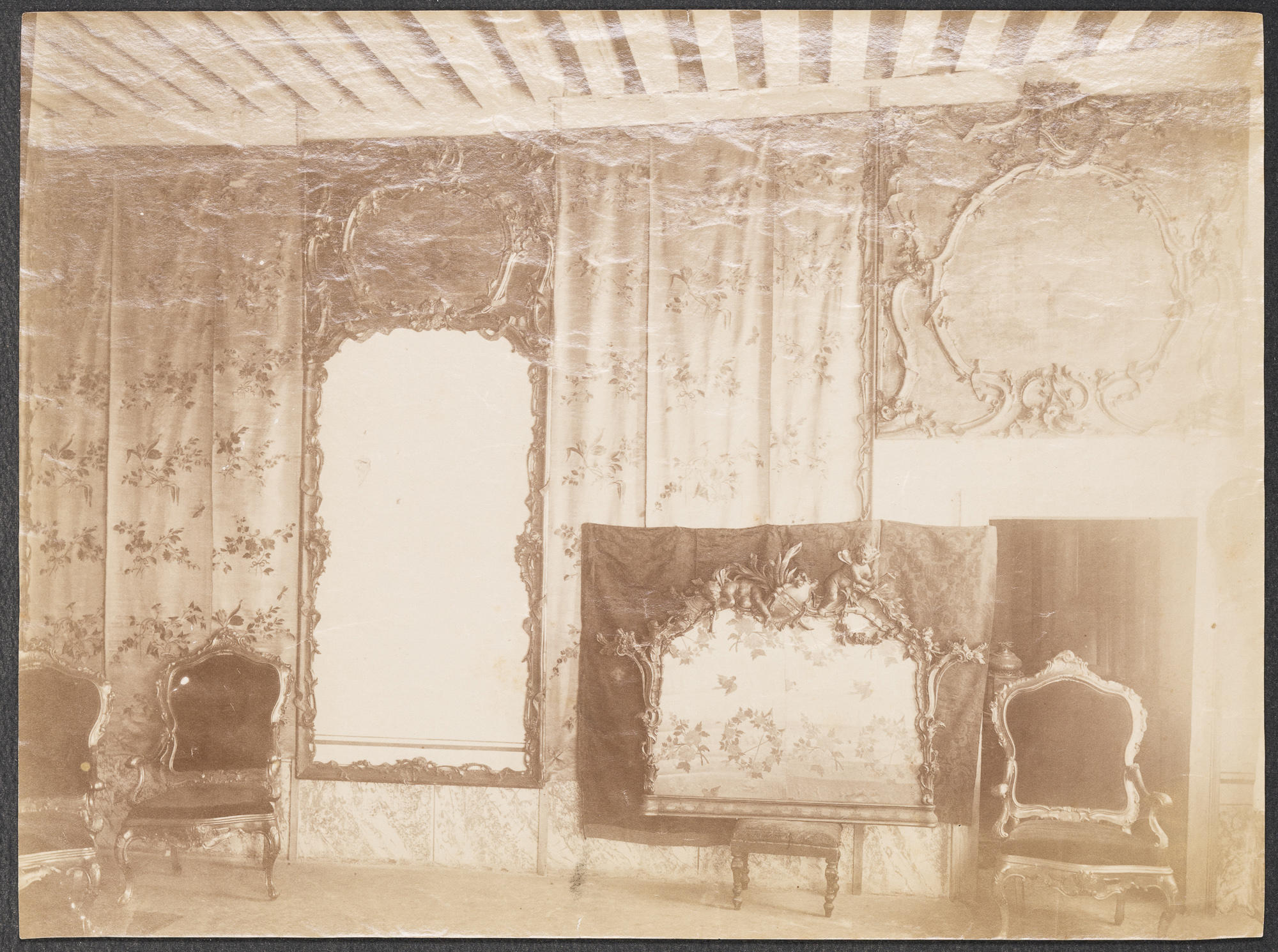
Italian, Venice, Paneling from the Palazzo Morosini, Venice, 1894–1897
It appears that Settini created the mirror that we now see by connecting the top molding with another mirror. Clever!
The mirror as a whole consists of 21 pieces of glass, and it’s fascinating to think about the complexities of shipping something so fragile from Venice to Boston on a steamship in the late 19th century. It turns out that there were some mishaps, though—the mirror was broken when it arrived in Boston on the SS Catalonia in April 1898.
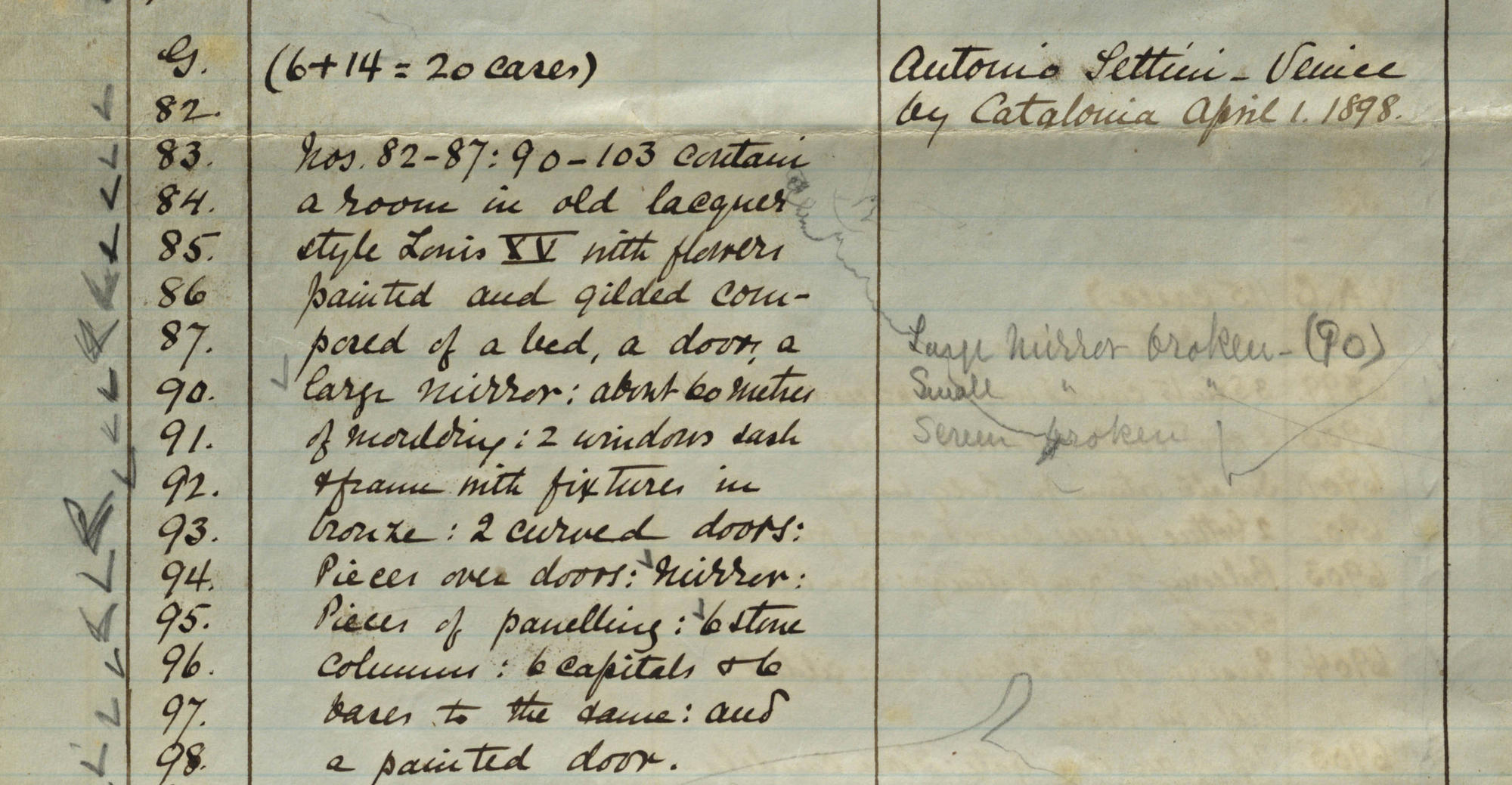
List of Cases Stored, 1898, annotated in pencil “Large Mirror broken”
Several of the panes were probably replaced, but Isabella had another idea for the large crack down the center—she asked her friend, the artist Martin Mower (1870–1960), to paint a spray of flowers over it to conceal it. And indeed, the crack is not noticeable!
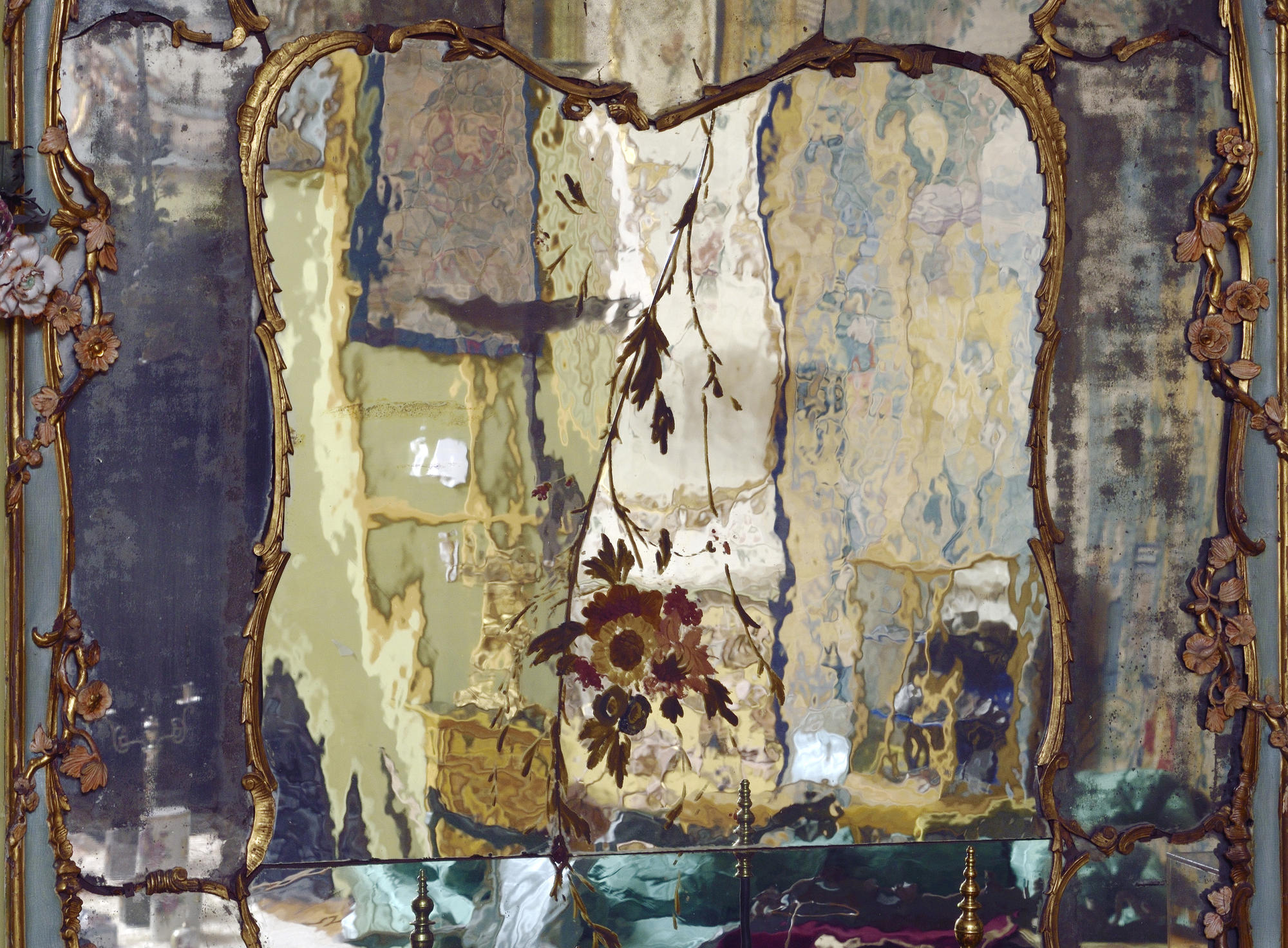
Detail of the Mirror showing Martin Mower’s flowers
Mower was likely proud of having nine of his paintings and drawings in Isabella’s collection, but perhaps this little flower spray gave him a good chuckle when he visited.
You Might Also Like

Dive Deeper
Check out Adam Pendleton's work, inspired by Isabella's layered installations and mirrors

Explore the Collection
Francesco Donato (Italian, 1545–1553), Commission of Doge Francesco Donato to Girolamo Morosini as Captain of Brescia, 17 July 1547

Explore the Collection
Italian, Venice, Mirror (specchiera), last quarter of the 18th century